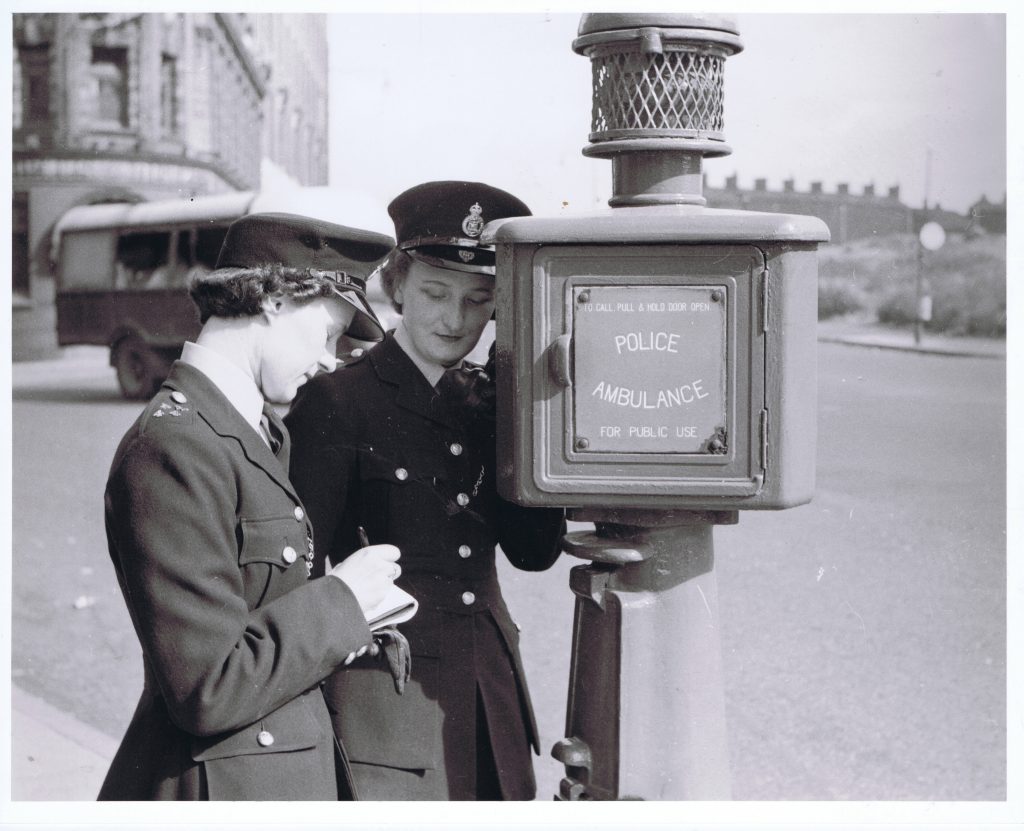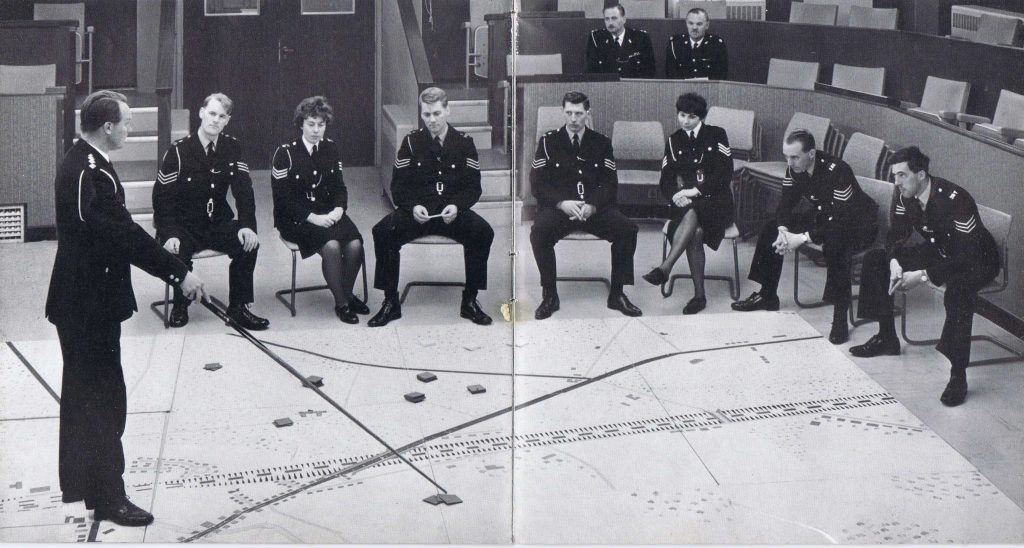Published on | #WeAre50, General
The short answer is yes. Yes they did. Only two mind: Command and Control and a very early version of PNC, which only had the vehicle module at this time.
Everything else was done on paper and via telephone.

One comment from one of our retired officers made me chuckle: Howard Richards recalled “If you wanted a copy of a form or a file, it was produced as a carbon copy from the original. The quality of the copy depended on how far up the pecking order you were!”
There are loads of different computer systems we could highlight that have revolutionised policing in the past 50 years (our recent article highlights how the Police National Database shares over 2 billion pieces of data and allows for reactive facial recognition searches).
I have chosen to focus on recollections of the collator’s index, and the introduction of the Police National Computer (1974) and Command and Control (early 1980s), to highlight some of the biggest differences between the start of West Midlands Police and today.
Intelligence and crime checks
Retired Temporary Chief Inspector Berni May share some recollections of the old collator’s office, which should bring back memories for many former officers!
“Each sub-divisional station had a collator. This was a post almost always filled by an experienced constable, often nearing the end of his service.
“He maintained a card index of all the known offenders on his sub-division, giving details of their arrest and antecedents, known associates etc.
“He would review the arrests each day and where someone from another area was arrested he would collate the details and send them to his counterpart on the relevant subdivision.
“If an offender moved to another subdivision then his record card would be forwarded to them.
“It was around 1986/7 that early Apple Macintosh computers were introduced in an effort to digitise the collators records.
“Given that most of the collators, who were expected to use these ‘new-fangled’ computers were men in the latter part of their service, who were probably born in the 1940s or earlier, they were not well received.

“The early models were not networked in any way, so sharing data from one subdivision to another still required a telephone call.
“On subdivisions where the machines were embraced by the collator, he would often turn it off when he went home and officers on lates or nights wouldn’t know how to even turn it back on, never mind search for any records.
“This was before MS Windows became popular so you had to know the right code to instigate a search.
“This method of searching for information is inconceivable when compared to modern day intelligence checks, being able to find all relevant records at the click of a button.”
Command and Control
At the inception of West Midlands Police, the Information Room at HQ would receive 999 calls from the public and calls from fire and ambulance control.
Urgent jobs would see radio cars being sent directly, otherwise calls would be made to local stations to dispatch officers on foot, or to officers directly via their radios.
In the 1980s a new Command and Control system was being trialled by the Home Office, with West Midlands Police being chosen as one of the pilot forces.
Retired Detective Chief Superintendent Graham Trevis recalls being one of the sergeants manning the initial trial at Bordesley Green.
Together with another sergeant, he travelled to the Royal Society of Arts in London to see a purpose-built console with an in-built monitor, keyboard and phone that had been specially designed for the trial.
“We told them straight away it was totally unsuitable – all of the surfaces needed to be changed from level to slanted, to stop officers leaving food, cups and ashtrays all over them. I was sick and tired of spending the first 10 minutes of every shift tidying up all the rubbish.”
Senior officers attached to the Home Office had been sent to observe the trial, and Graham was later asked what some of the special codes being used meant – he explained that Foxtrot Charlie at 6 referred to bringing fish and chips in for the controller’s tea, and Bravo Sierra at 9 referred to a bacon and sausage sandwich for his breakfast!
Managing resources has also changed dramatically: 50 years ago, resources were monitored on a huge physical map in the Information Room, and marked up when they were committed. Nowadays using modern radios, the control room can see exactly where all the resources are and what their status is, as they move around on a map on the screen.

The stark change even over 30 years was also observed by former Chief Superintendent Bruce Gilbert:
“Interestingly when I joined (1978) the only computer of which I was aware was the PNC/ Command and Control set up. Nearly 30 years later as a Chief Supt at Walsall I was asked by the Force Surgeon to find a job for a constable which didn’t involve looking at a computer. I couldn’t!”
Corinne Brazier – Heritage Manager
